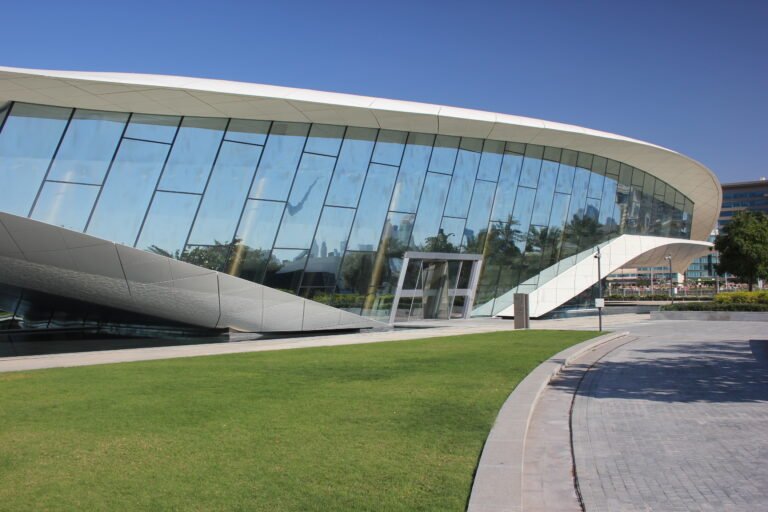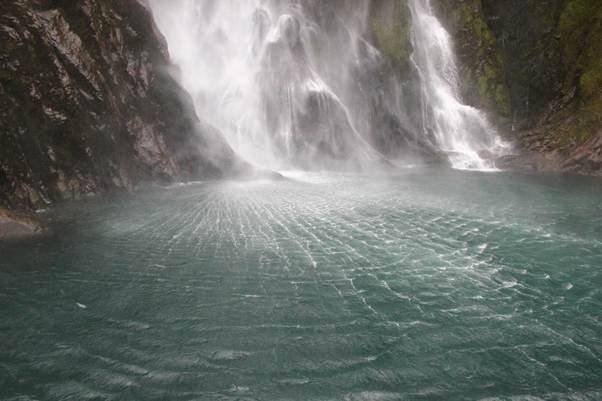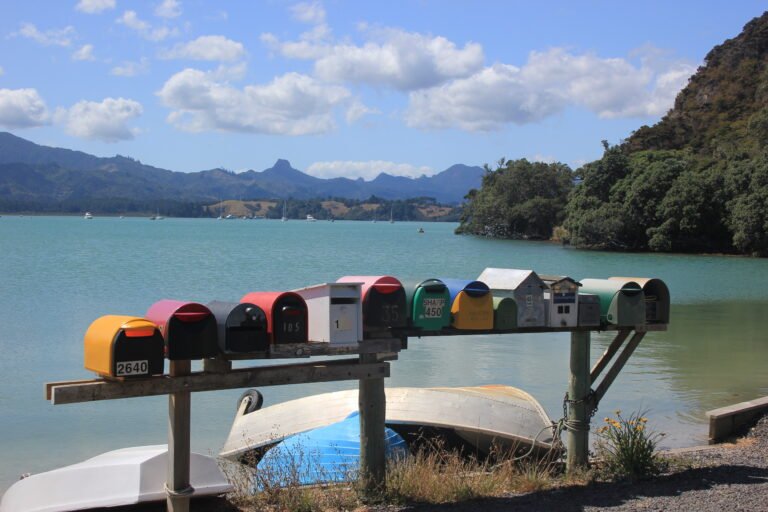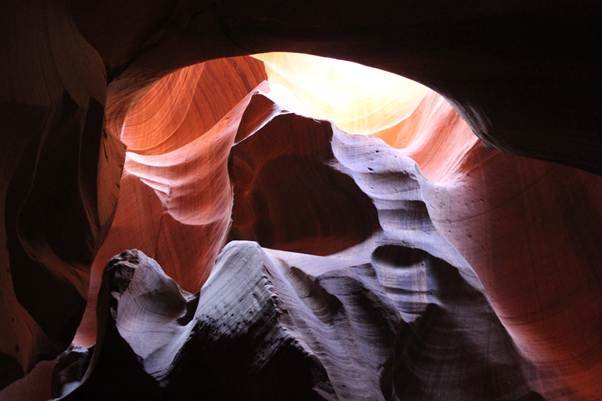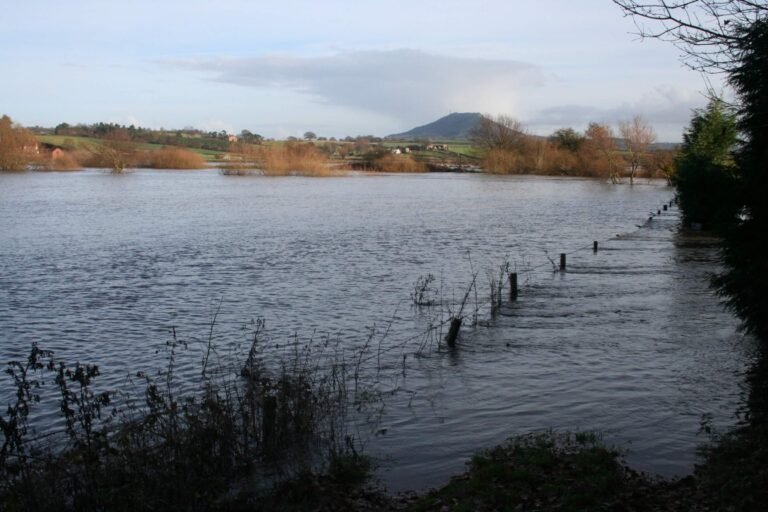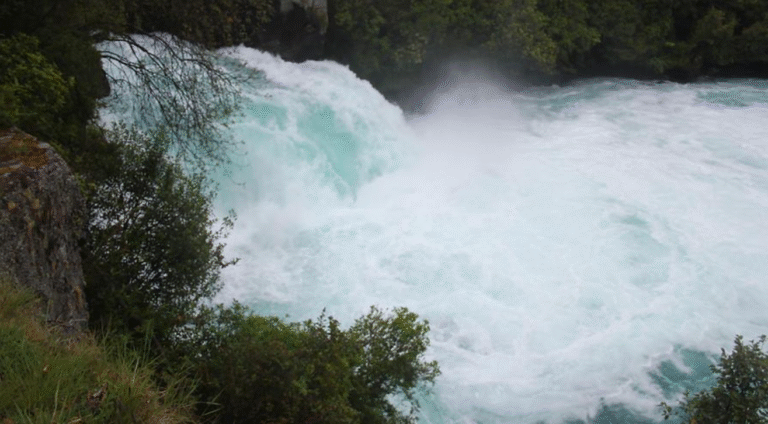Travel Thoughts… And Questions
This page shares thoughts I have had over the years and raises issues, some of which are now receiving widespread attention. You may or may not be interested!
1 WALKS AND BOXES
Many years ago, I was introduced to Trail Walking by a friend. I joined her in walking most of The Severn Way. I was completely bowled over by following a river from source to sea. It is not just a walk; it is an allegory of life. The growth of the river and all and its environment mirrors our personal journeys through life.
This experience contributed much to the reasons for the name ‘Livetheflow’ and the nature of the website.
The experience also led me to walk hundreds of miles of national trails with Jenni. This included, amongst others, The Glyndwr Way, Hadrian’s Wall, several hundred miles of the South Coast Path, The Shropshire Way and the Wye Valley Walk. These journeys continued to shape our approach to travel.
I am grateful to Rebecca Solnit for expressing ideas that were perhaps already developing in my subconsciousness. I came across her book “Wanderlust: A History of Walking” [Penguin Books, 2000]. I was enthralled by her first chapter, ‘Tracing a headline’ where she expresses her philosophy of walking. She has a great gift for verbalising the profound.
Rebecca observes that modern life tends to be a lived in series of disconnected boxes. She believes that technology makes this worse by ‘minimising the unstructured travel time’ between the boxes.
Yes, we are more efficient and productive, but the destination rather than the journey is all. We are left in a disconnected world obsessed with speed and immediacy.
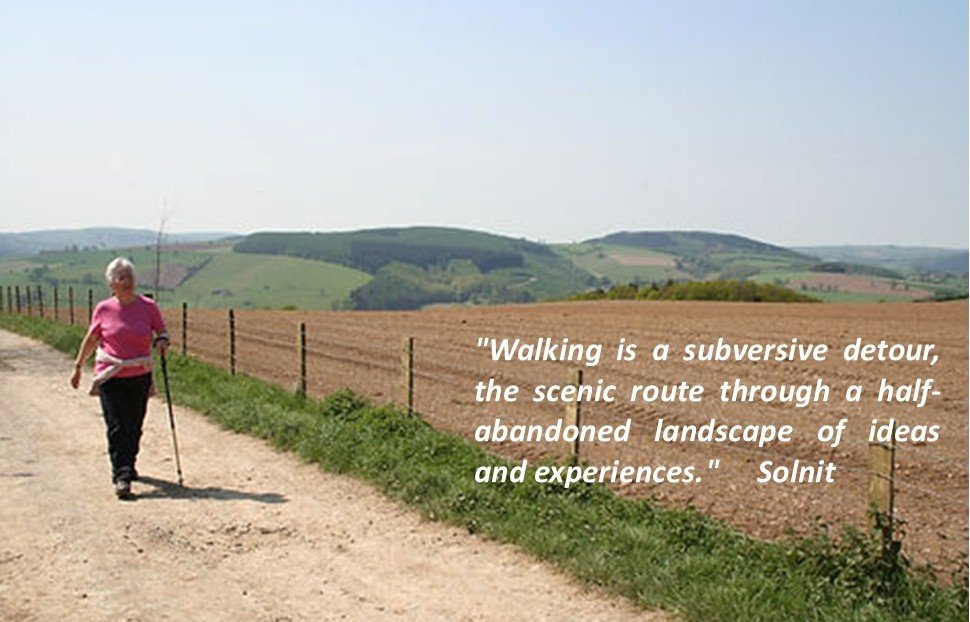
Rebecca commends walking because it makes our world more connected. Her words quoted below are so much better than mine. There is a profound relationship between Livetheflow and the ideas she expresses.
“Many people nowadays live in a series of interiors – home, car, gym, office, shops – disconnected from each other. On foot everything stays connected, for while walking one occupies the spaces between those interiors. One lives in the whole world rather than interiors built up against it.”
“I like walking because it is slow and I suspect that the mind, like the feet works at about three miles an hour. If this is so, then modern life is moving faster than the speed of thought or thoughtfulness.”
“New time saving technologies make most workers more productive, not more free, in a world that seems to be accelerating around them.”
“The random, the unscreened, allows you to find what you do not know you are looking for, and you don’t know a place till it surprises you. Walking is one way of maintaining a bulwark against this erosion of the mind, the body, the landscape and the city. Every walker is a guard on patrol to protect the ineffable.”
Since Solnit wrote ‘Wanderlust’ in 2000, the technology of everyday life has had at least one quantum leap for most people. For most people, their phone, the ‘screen box’, has enveloped and permeated all the other boxes that Solnit identifies and added a new dynamic. It is a development that one would have initially thought to be liberating in the extreme. It has become the first box on waking and the last before sleeping. It has added volume to events and exponentially increased the breakneck speed of life.
It is an irony that the things that should make us free have enormous potential for doing the opposite. This new technology gives a prophetic twist to the Solnit quotation above: “The random, the unscreened allows you to find what you do not know you are looking for ….”
Our journey in ‘the flow’ can mean being caught up at times in the frenzy of all these boxes, but I trust, in ways that they do not own us. Ultimately, there is a different agenda, direction and purpose. There needs to be time and space for the journey. The destination is not everything.
2 TRAVEL BOXES
The last half of the twentieth century saw the birth and phenomenal growth of the travel package – the ‘travel box’? In so many ways, this has been deeply wonderful for many people. Fantastic experiences are available worldwide to ordinary working people. Extraordinary life-time holidays can be enjoyed, but unless you are rich or extremely ingenious, they raid the savings. Tourism has also brought prosperity to many people. The first quarter of the twentieth century saw this travel revolution consolidate. At the top end, it is simply staggering the experiences money can now buy.
And it has also become so easy. In 1980, we visited my brother. He spent all his working life in North Thailand. Without him in those early days, we would have been totally lost, completely unable to communicate or read all the signs in Thai Script in Chiang Mai. In 2001/2 we took the family back and were able to book, online and in English, an elephant ride in Chiang Mai before we left England.
The difference all over Thailand was phenomenal. We understood firsthand the term ‘tiger economy’. The pictures below show the same road in Hua Hin. In 1980/1 it was a sleepy delightful holiday / fishing village and in 2001/2 a bristling international holiday resort with skyscraper condos and hotels. The dirt road pictured had become a four-lane highway.
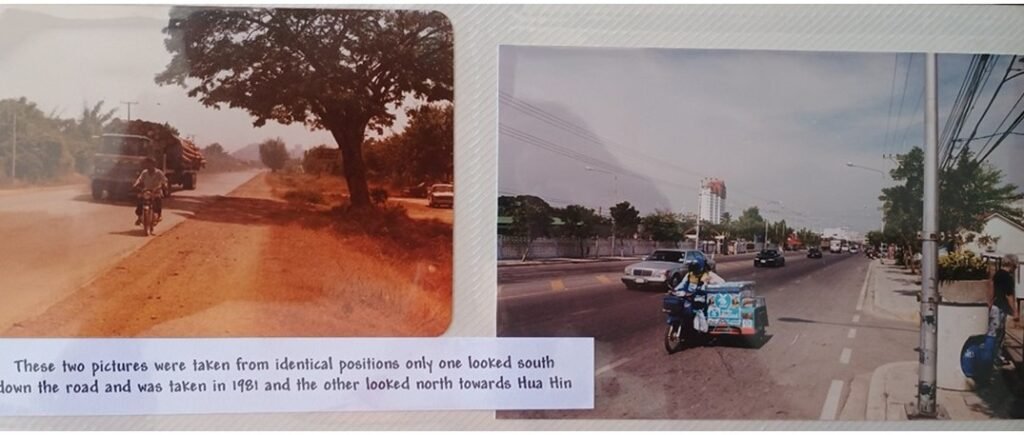
How much does this ‘package holiday’ approach to travel “box in” the experience? Obviously, the answers to this question will be on a wide continuum, but there remain questions worth asking. Do travel packages, by their nature, insulate from real life, from the realities of the countries they visit? How much of life, both on the journey and at the destination, is anesthetised and deliberately kept out of the holiday box? In any case, how much do the travellers themselves want this because their holidays are primarily an escape from the pressures of life? Perhaps the answers to these questions are personal?
3. THE CRUISE BOX
Similarly, the number of cruise ship passengers has risen from around two million per year in 1985 to nearly 40 million.
We began to notice the impact of these floating holiday boxes on our New Zealand holiday in 2017. On our Interrail ‘Scandi ’24’ journey, their impact was highly visible because most of our stops were in Scandinavian ports. Not only did these massive vessels keep dominating the skyline but one could guarantee the main local tourist tick-box hotspots would be inundated.
The most extreme example was the tiny village of Flam at the head of a world heritage fjord. It has a normal population of around 350, but it is visited by 110 cruise ships a year, each bringing several thousand visitors. Of course, there are great benefits as local businesses are boosted and many people get to see great places. However, in recent years the downsides have become more visible. Over-tourism is now a major issue in many places. The environmental impact of cruising is now widely realised.
What really focused our minds was an event during our visit to Bergen. Like everyone else, we did the main tourist tick-box activity in Bergen and went up …. The view was spectacular. So much so, that we shared it with the family on WhatsApp.
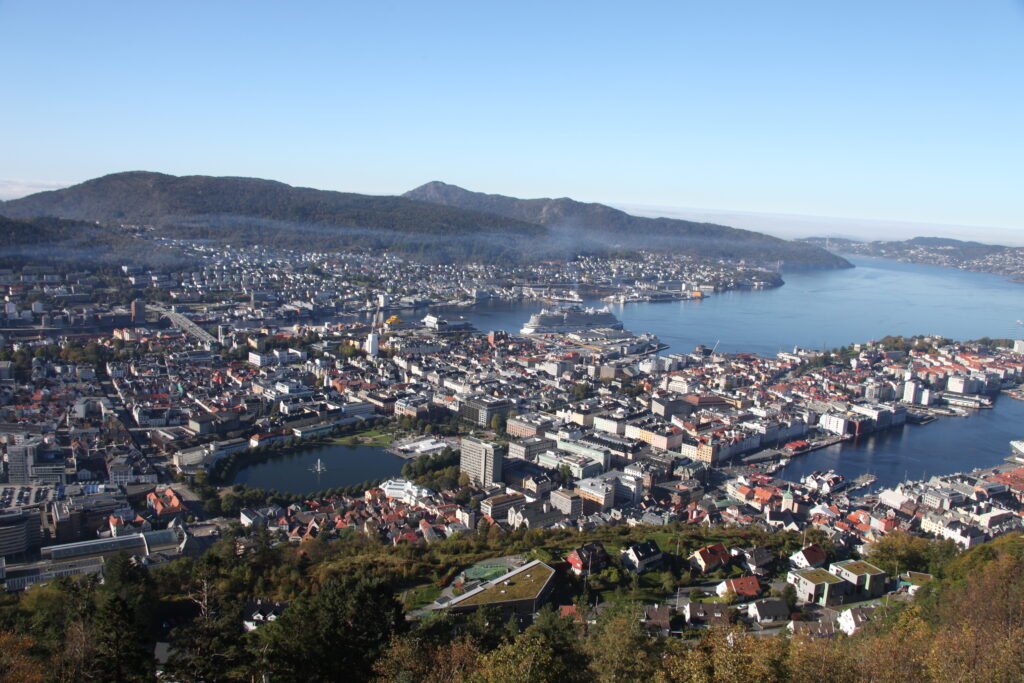
We got an instant response from Matt. I had just happened to take an unusually good picture of the principle of ‘inversion’ in action. If you look carefully the pollution from the cruise ship engines rises vertically and the spreads a pollution pall right across Bergen. The polluted air is held in place .
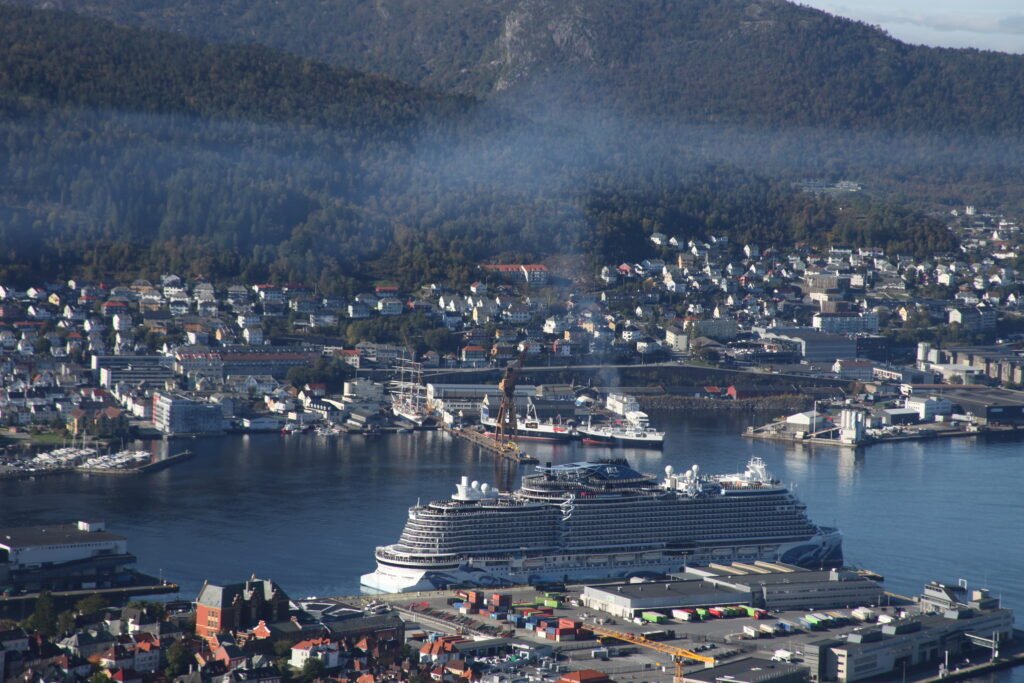
The pollution bought by these ships is so severe that from 2026 till 2032 a series of increasingly tight regulations are being introduced in Norway to deal with the environment damage caused by cruise ships.
TICK-BOX TOURISM
Almost all of us engage in tick-box tourism. There are so many wonderful things to see and so many of us that want to see them that it’s inevitable. There are even queues on Everest. I suppose it’s all about degree and the answers are all relative. To what extent is our tourism superficial and anaesthetised? How much is it exploiting people and the environment? Do we engage in any depth with the places we visit? Without being negative, these and many more similar questions are worth asking with sensitivity and compassion.
Of course, many answers concern attitudes but they also have a lot to do with time. Some say one should ‘do’ the famous Scottish route, the ‘North Coast 500’ in 5 days: we took 15. Some advise 15 days or less to ‘do’ New Zealand: we took five weeks.
Most of those who ‘do’ New Zealand ‘do’ Milford Sound.
This is an interesting example of the tourist box in its many forms. This packaged box out of Queensland, lasts about twelve hours during which you will spend about 8 hours in the bus-box, 2 hours on a boat-box on Milford Sound and for another 2 hours you will be let out briefly at various stops. Yes, the scenery is breath-taking, unforgettable, superb ….. but is this what engaging with one of the world’s beautiful places is all about?

Incidentally, you could marvel at the value of the camera kit you see on the fleet of Milford Sound boats. My description of the ten-minute take a selfie stop is our New Zealand posts from 2017. This picture captures the theme!
CONCLUSION
Carry on enjoying the overwhelming beauty of nature, carry on thinking, livetheflow!


